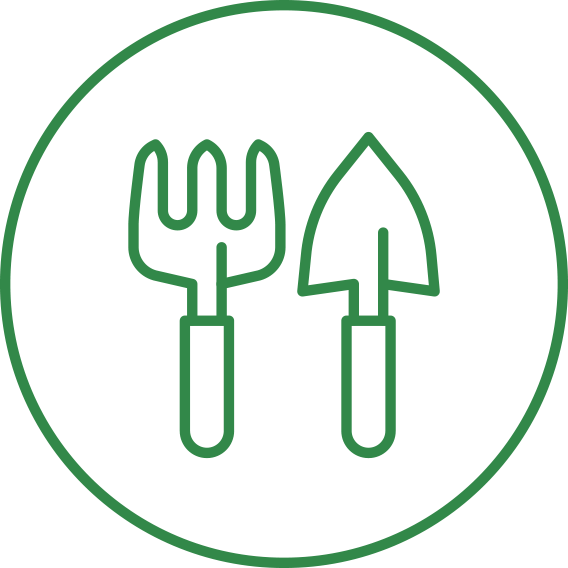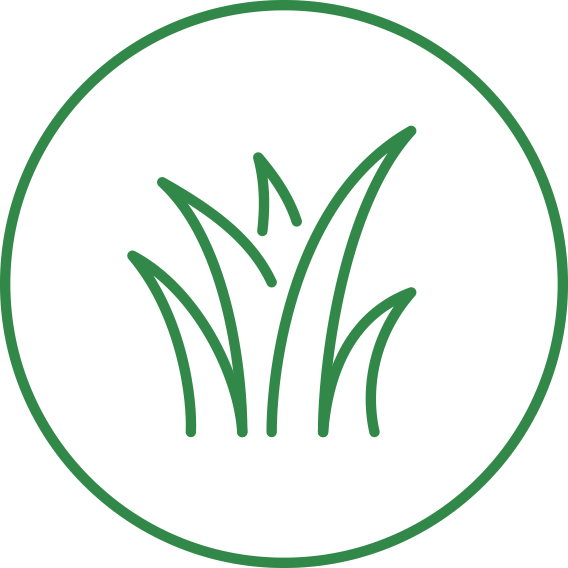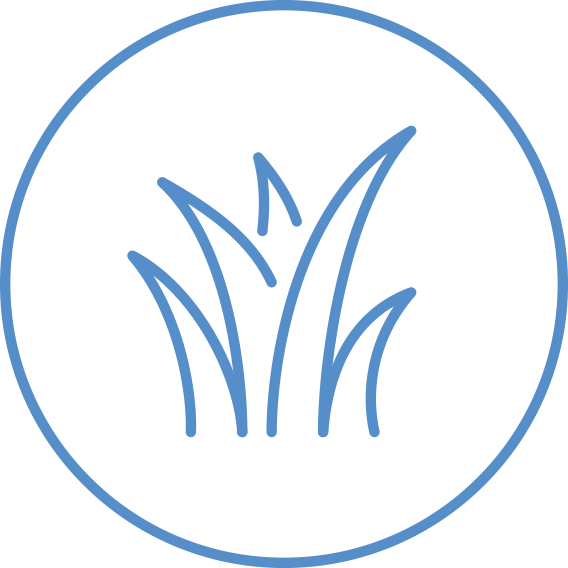Below you will find publications related to natural lawn care and the Lawn to Lake program, categorized by topic. Clicking Download File will allow you to download a PDF of the publication, while the More Details link will take you to the publication listing on the Illinois-Indiana Sea Grant Publications & Products page.
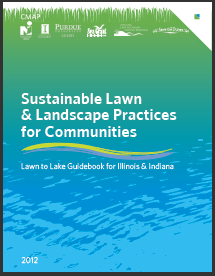
Sustainable Lawn & Landscape Practices for Communities: Lawn to Lake Guidebook for Illinois and Indiana
The intent of this guidebook is to provide landowners with information that can help reduce harmful impacts on watersheds while emphasizing natural lawn care.
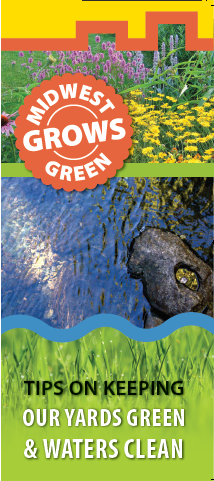
Midwest Grows Green
This brochure offers tips on keeping our yards green and water clean.
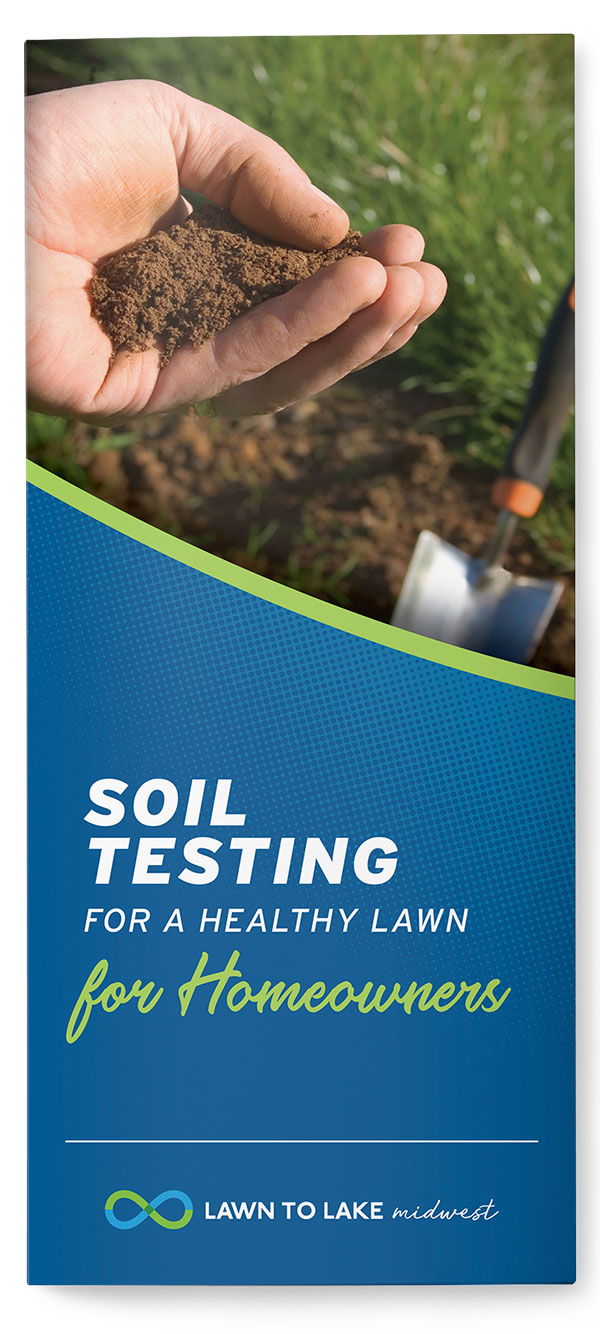
Soil Testing for a Healthy Lawn
This brochure is a part of a natural lawn care communication campaign developed and refined through a series of grant funded homeowner surveys and focus groups. The goal is to address the issue of lawn care-related pollution in watersheds by targeting outreach efforts directly towards homeowners engaged in lawn care. Survey data revealed that soil testing is a lawn care practice overlooked by homeowners. This brochure aims address the importance of soil testing as it relates to turfgrass health.

Right Plant, Right Place: Selecting Turfgrass for Homeowners
This brochure is a part of a natural lawn care communication campaign developed and refined through a series of grant funded homeowner surveys and focus groups. The goal is to address the issue of lawn care-related pollution in watersheds by targeting outreach efforts directly towards homeowners engaged in lawn care. Choosing the right turfgrass species for the lawn’s growing conditions is an important management practice. This brochure provides a brief introduction to turfgrass growth habits, a checklist for understanding your lawn’s growing conditions and provides a turfgrass selection guide.
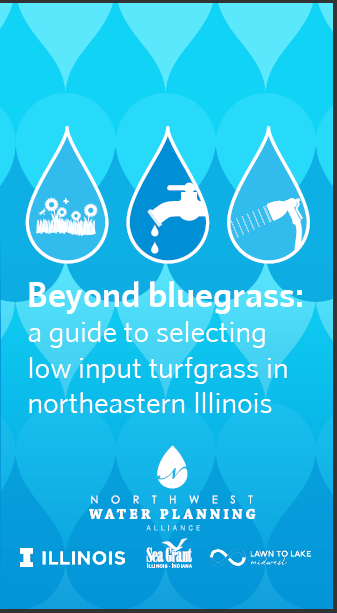
Beyond Bluegrass: A Guide to Selecting Low Input Turfgrass in Northeastern Illinois
This product is a guide to selecting low-input turfgrass in the northeastern Illinois region.

Seed or Sod? Establishing a New Lawn
Learn about the pros and cons of using two different methods to establish a new lawn.
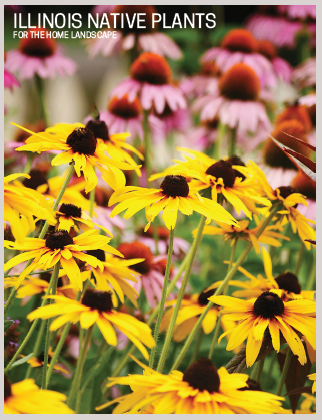
Illinois Native Plants for the Home Landscape
This brochure is a guide to the characteristics and benefits of selected Illinois plants to help home gardeners choose native plants appropriate for site-specific conditions.
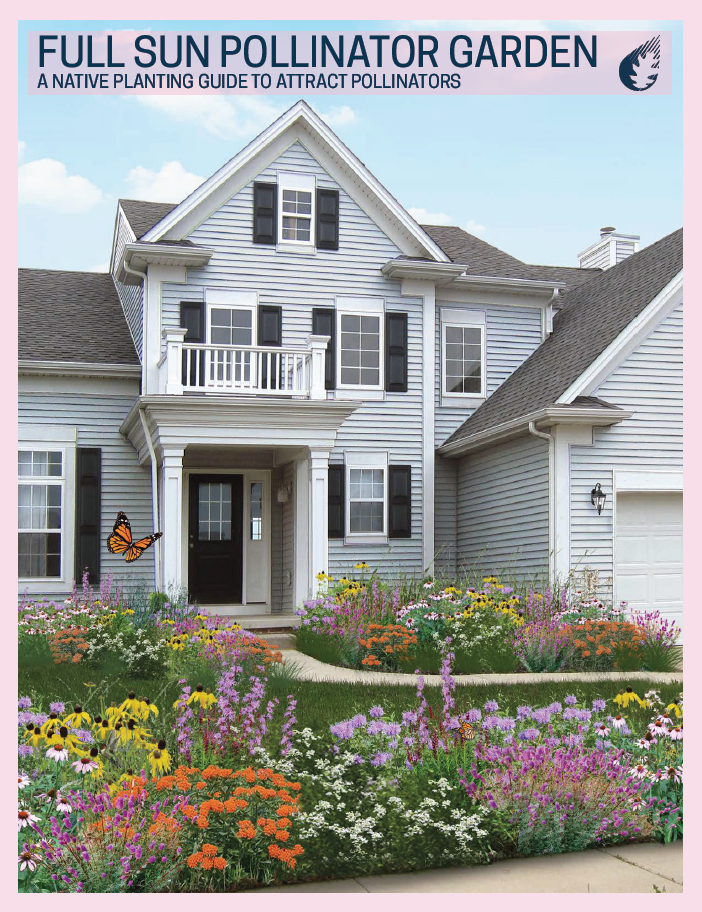
Full Sun Pollinator Garden- A Native Planting Guide to Attract Pollinators
This guide features a plant plan that creates year-round interest for people and extends the foraging season for pollinators.
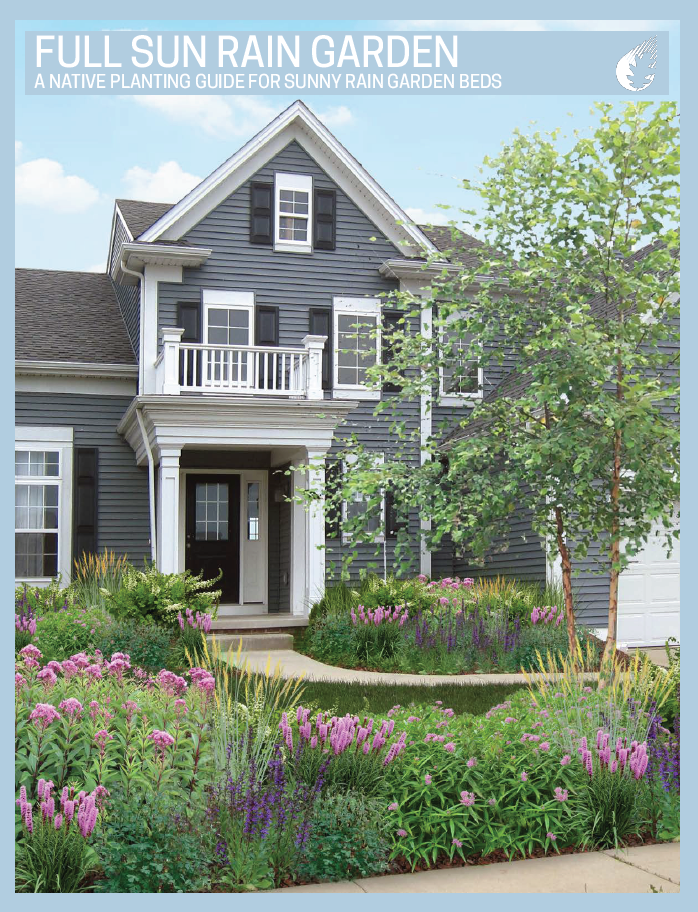
Full Sun Rain Garden- A Native Planting Guide for Sunny Rain Garden Beds
This guide provides a suggested rain garden planting plan.
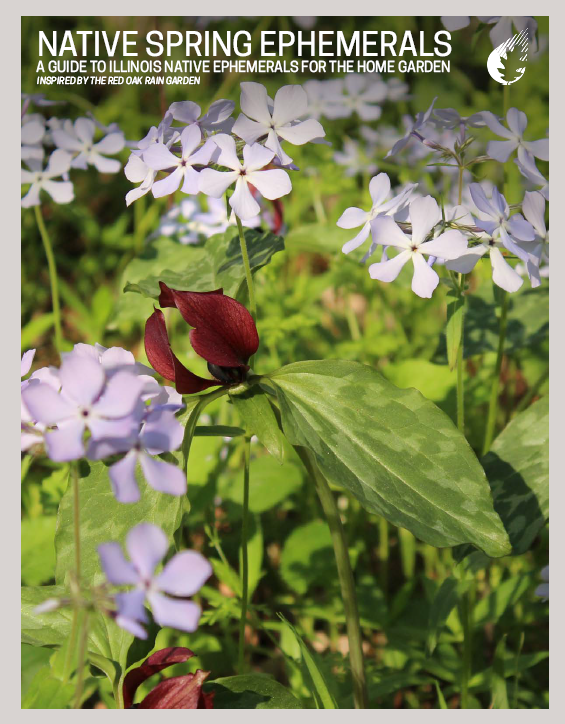
Native Spring Ephemerals: A Guide to Illinois Native Spring Ephemerals for the Home Garden
This brochure is a guide to the characteristics and benefits of selected Illinois spring ephemerals to help home gardeners choose plants appropriate for site-specific conditions.
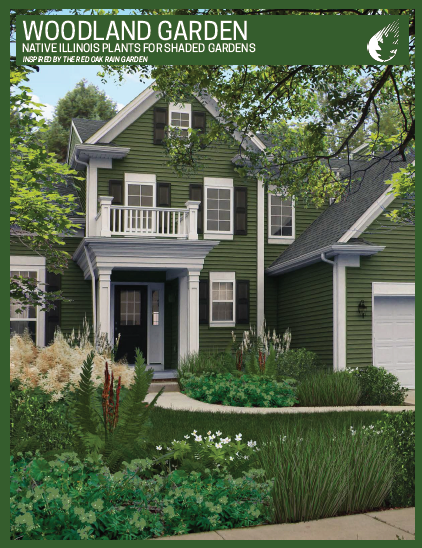
Woodland Garden
This guide features a planting plan focused on natives typically found in Illinois woodlands. The plan creates year-round interest for homeowners and extends the foraging season for pollinators. Additionally, native plants help soak up rainfall and can be used in rain gardens.
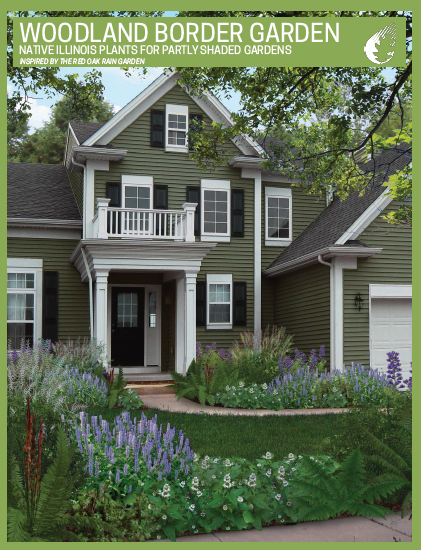
Woodland Border Garden
This guide features a planting plan focused on natives typically found in Illinois woodland borders. The plan creates year-round interest for homeowners and extends the foraging season for pollinators. Additionally, native plants help soak up rainfall and can be used in rain gardens.

Wet Woodland Garden
This guide features a planting plan focused on natives typically found in wet Illinois woodlands. The plan creates year-round interest for homeowners and
extends the foraging season for pollinators. Additionally, native plants help soak up rainfall and can be used in rain gardens.
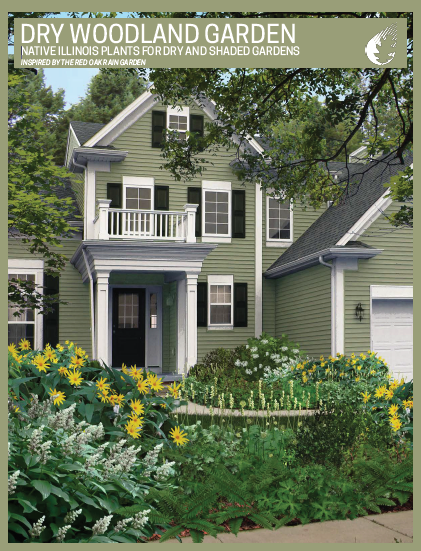
Dry Woodland Garden
This guide features a planting plan focused on natives typically found in dry Illinois woodlands. The plan creates year-round interest for homeowners and
extends the foraging season for pollinators. Additionally, native plants help soak up rainfall and can be used in rain gardens.
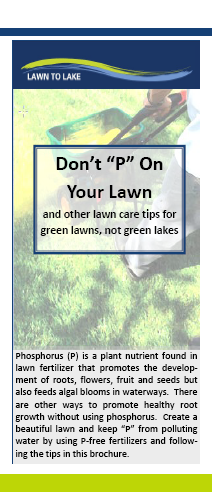
Don’t “P” On Your Lawn
This brochure shows how to create a beautiful lawn and keep phosphorous, or “P” from polluting water by using P-free fertilizers
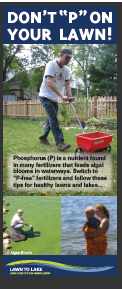
Don’t “P” On Your Lawn Rack Card
Lawn to Lake provides information on how to protect water quality through natural lawn care. This rack card is geared towards lawn care retailers, explaining the benefits of carrying phosphorus-free (P-free) fertilizer and natural lawn care products.
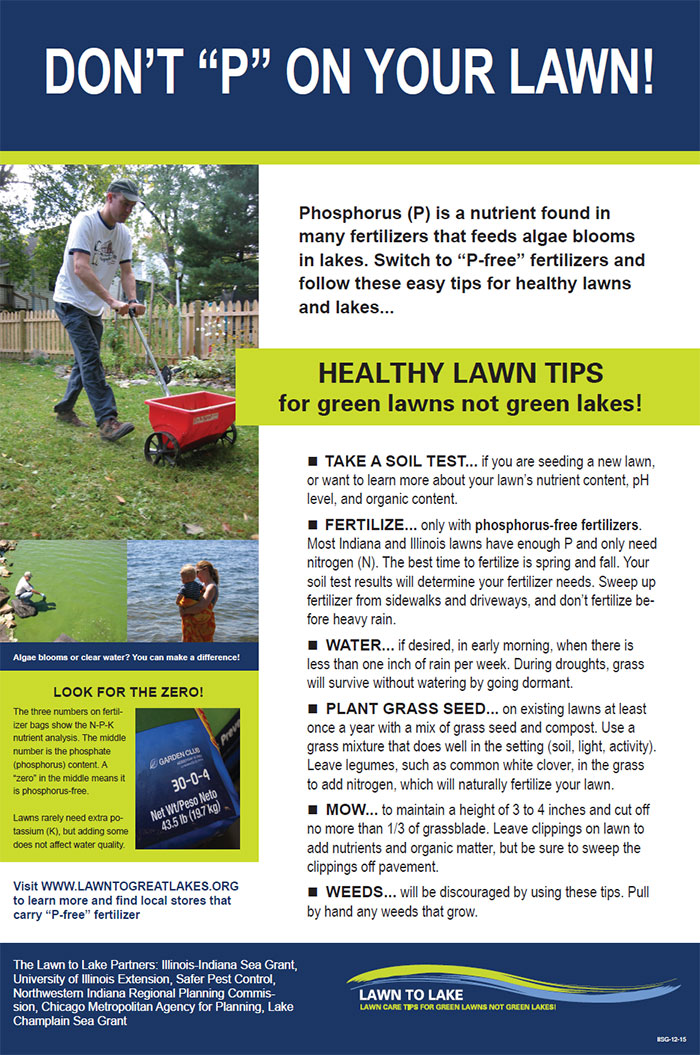
Don’t “P” On Your Lawn! Poster
For a healthy lawn that doesn’t pollute local waters, it is important to avoid fertilizers that have phosphorus (P). This poster, which is made for lawn-care retailers, explains how to identify “P-free” fertilizers. It also provides six easy tips for having a healthy lawn.
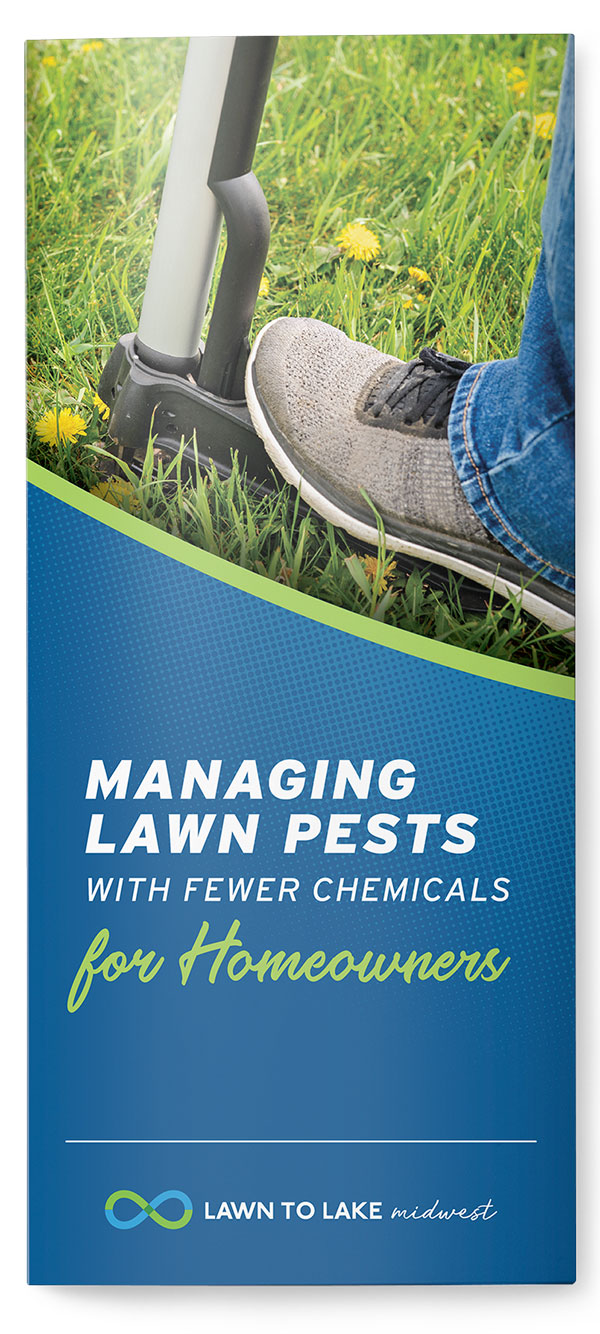
Managing Lawn Pests with Fewer Chemicals
This brochure is a part of a natural lawn care communication campaign developed and refined through a series of grant funded homeowner surveys and focus groups. The goal is to address the issue of lawn care-related pollution in watersheds by targeting outreach efforts directly towards homeowners engaged in lawn care. Managing lawn pests was identified as a main concern for homeowners.
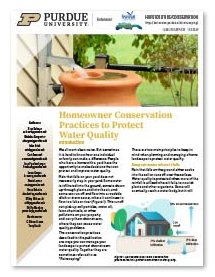
Homeowner Conservation Practices to Protect Water Quality
Homeowner Conservation Practices to Protect Water Quality Thumbnail
HOMEOWNER CONSERVATION PRACTICES TO PROTECT WATER QUALITY
PUBLICATION NUMBER:
IISG21-RCE-ERP-002
PAGES:
6
DESCRIPTION:
Anyone who has a home with a yard can help protect and improve water quality. This publication offers practical advice about reducing impervious surfaces, select proper landscape plants, effective management of lawns, installing rain barrels and rain gardens, and proper care of septic systems.

Lawn and Landscape Practices for Northwest Water Planning Alliance Communities
This manual lays out the water resources in the NWPA region, reasons to conserve water outdoors, and recommended lawn watering restrictions.
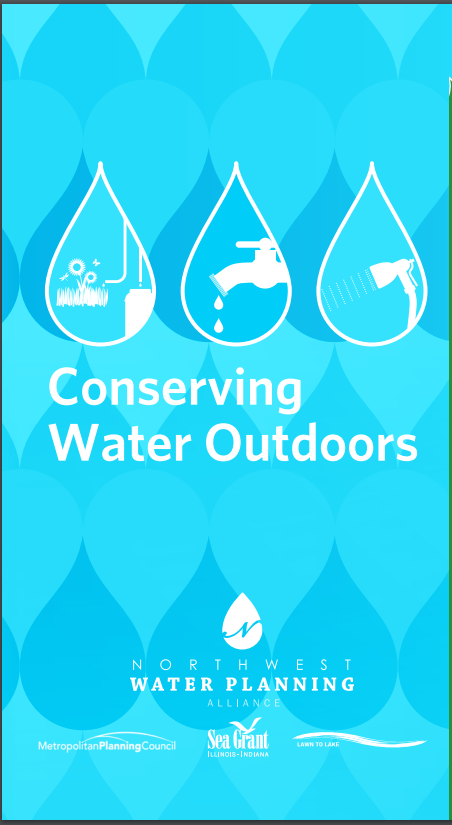
Conserving Water Outdoors
This outreach brochure provides simple steps for homeowners to conserve on outdoor water use. Lawn watering and other outdoor water uses can account for 30 percent of Illinois home water usage throughout the summer, but only half of that water penetrates the soil, with the rest lost due to inefficient watering practices. Reducing outdoor water waste in Illinois saves money and protects our limited water resources, especially during times of drought. We can all take a few simple steps to use water more efficiently.



